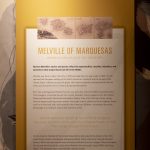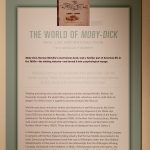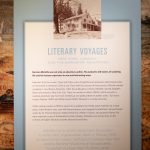“‘Exhibit’ is a noun, but it is also a verb, meaning to show or display. Show or display what? Stuff. Not pictures of stuff or descriptions of stuff, but stuff. And the use of real, physical stuff…is what sets exhibits apart from books, TV, the Internet, etc.”
– Eugene Dillenburg, “What, if Anything, is a Museum?” In Exhibitionist, spring, 2011.
Exhibitions are one of the most common and important ways for museums to share collections with the public and put forward new interpretations of history, art, and culture. As the quote above suggests, the core function of exhibitions is to showcase and interpret original historical and cultural artifacts—in other words, to allow stories, lessons, and revelations emerge from artifacts, and to help visitors immerse themselves in cultural topics.
It is important to remember that exhibitions are a form of communication, just like books, articles, podcasts, TV shows, and speeches are. They have their own set of tools for their creation, and they come with opportunities and challenges. Thinking critically about your visit to a museum exhibition can help you make the most of the experience.
We at The Rosenbach have pulled together ten tips to help you get the most out of your visit to our institution, and other museums as well. Test them out when you visit our current show, American Voyager: Herman Melville at 200, and our exciting upcoming exhibitions including Manjiro: Drifting, 1841–2020. We hope you find these useful!
Top Tip #10: Think strategically about when, and with whom, you visit the exhibition.
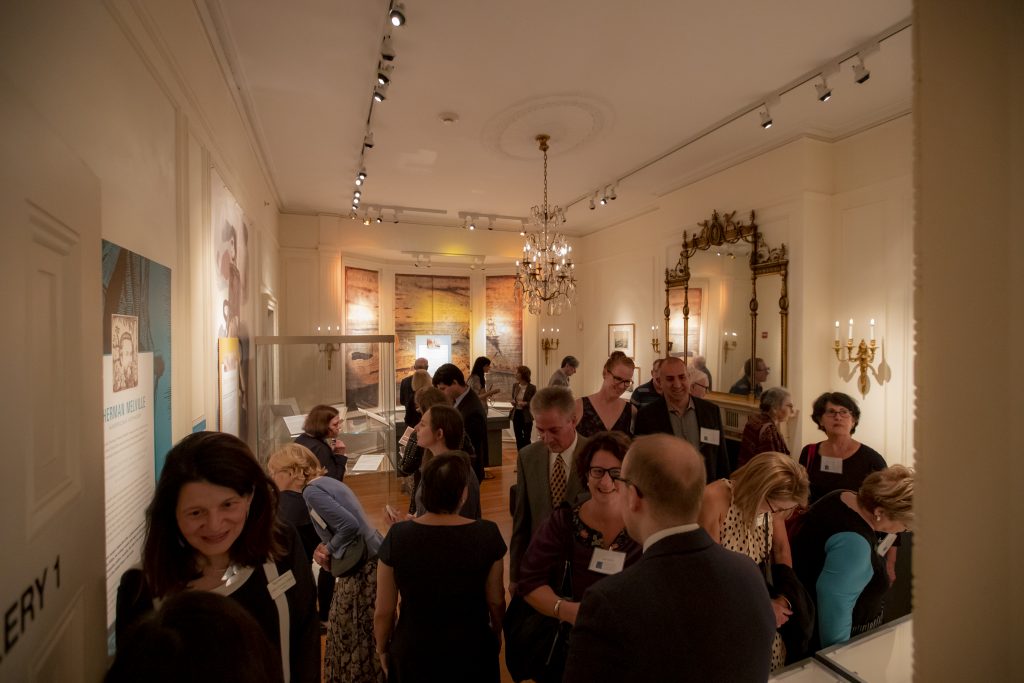
What experience do you hope to have at the museum—a peaceful, meditative visit to the gallery, or a social occasion spent chatting with friends? Think about what kind of museum trip you hope to have. Then, plan your both your company and the timing of your visit accordingly.
Assuming you visit with a friend, family member, or small group, take time to talk about the exhibition after your visit. Don’t just see the show and then go home; grab a cup of coffee or a bite to eat and discuss what you saw in the galleries. “If I’m seeing an exhibit with a friend, I like to ask them what their favorite things were after we’ve seen it,” says Rosenbach Volunteer Coordinator Andrew White. “I’ll be sure to get a fresh view of something I might have overlooked.”
White also offers some great advice about how to plan around large crowds. “For large, marquee exhibits, I have found that starting at the end is a great way to elude crowds. People tend to get clotted up at the beginning of large exhibits and then lose focus, so seeing a busy exhibit backwards helps me enjoy the objects without getting frustrated with crowds at the start.”
Top Tip #9: Reflect on the selection of objects the curators have assembled. And don’t feel like you have to see everything!
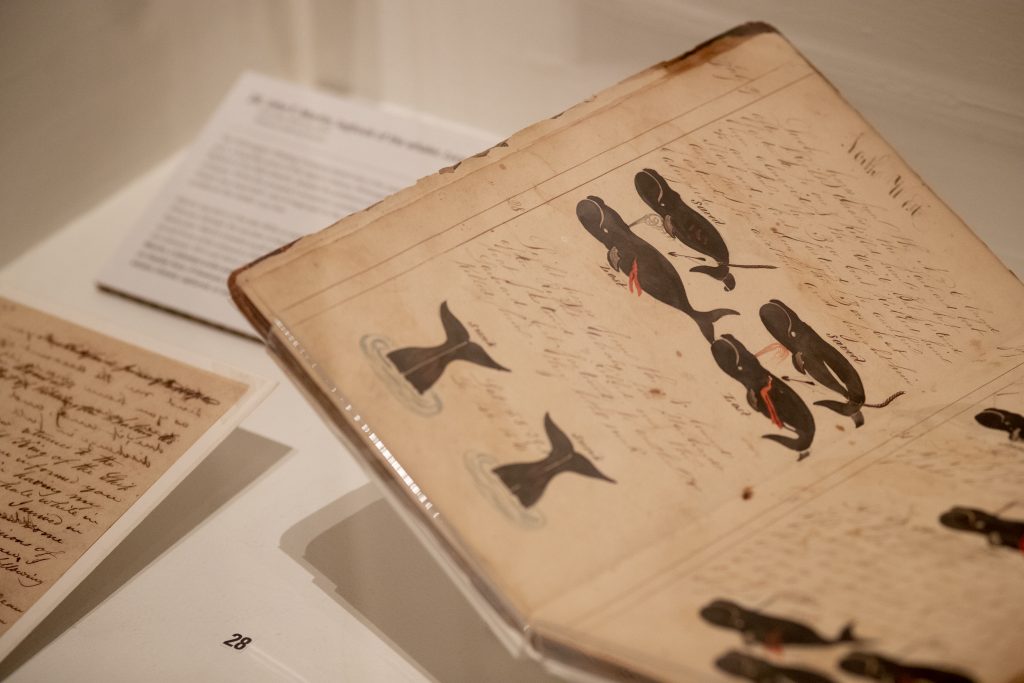
The selection of artifacts you see on display in a gallery was, most likely, carefully assembled by a curatorial team. Why do you think the curator(s) chose to bring these particular objects together in a space? It can be fruitful to reflect on the curatorial intention in a gallery.
Judith M. Guston, The Rosenbach’s Curator & Director of Collections, has this to say about studying objects on display. “As you move through the space, choose the most appealing objects and read only as much from each label as makes you comfortable. Curators often highlight passages on labels to show you what they feel is most significant, adding more for visitors who want to dig more deeply or who have more time. Don’t feel badly about reading only the first few lines to see what an object is about. If that satisfies you, move on. You may find several objects in any one exhibition that are your favorites and warrant that extra time to examine closely and read about more deeply. That’s what you are there for—to be fascinated by something special and to take that experience home with you and share the knowledge you’ve gained.”
Top Tip #8: Pay attention to the aesthetic design choices in the gallery: color, design, layout, and so on.
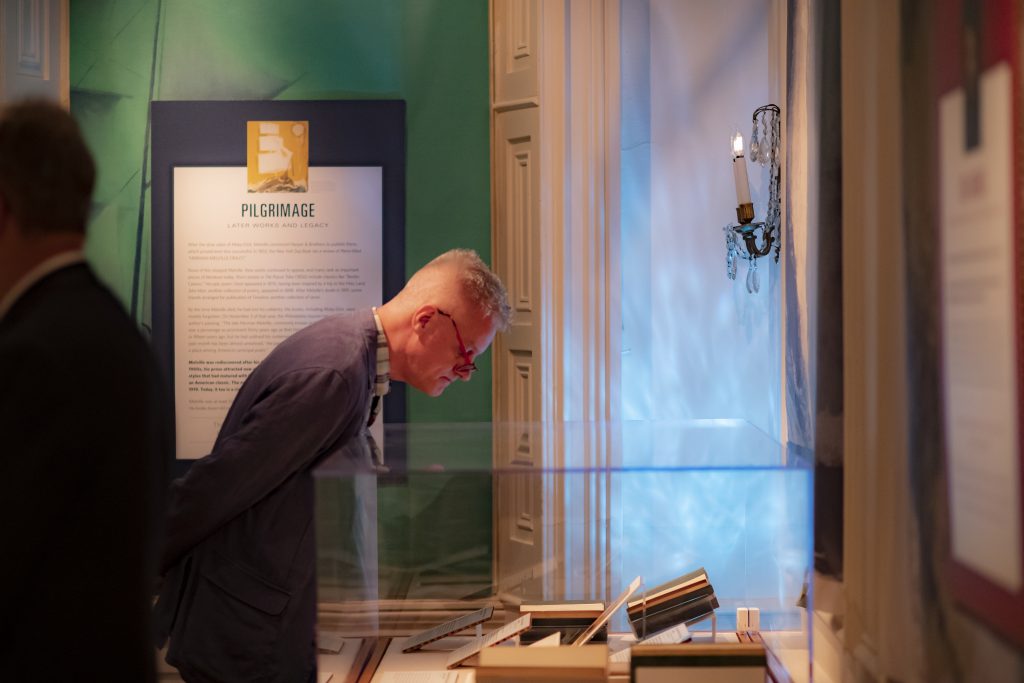
Thinking about exhibition design and layout is very important if you want to make the most of your experience. Says Judith M. Guston, The Rosenbach’s Curator: “If the curators have given you a route around the exhibition through signage or object or section numbers, expect that the ideas might build one on the next by moving in that direction.” You of course are under no obligation to follow any particular pathway through the exhibition and should feel free to explore on your own, but do bear in mind any directional cues offered to you by the curators, and why they are there. According to Rosenbach Volunteer Coordinator Andrew White, “If I do a quick scan or walk-through of the entire exhibit before reading any labels I can get an overview of the shape of the exhibit in my mind so I can then pace myself and begin to build an understanding of all that is present.” Be smart and self-aware about how you choose to navigate through an exhibition. It will help you pick up on the big ideas structuring the show.
Also, bear in mind that the exhibition design team often spends a lot of time thinking about gallery aesthetics as they prepare their content. The learning that happens in an exhibition space is both cognitive and emotive; in other words, exhibitions ideally should appeal to both your brain and your heart. What tools did the design team employ to make the topic of the exhibition come to life, and what messages do those tools communicate? American Voyager, for example, makes use of special lighting and sound effects to help visitors feel like they are out to sea with Herman Melville and his most iconic fictional characters.
Top Tip #7: Ask yourself the same questions about an exhibition that you would about, say, a piece of opinion writing. Who created it? What’s the premise behind the exhibition? Why did a museum decide to mount this show, and why now?
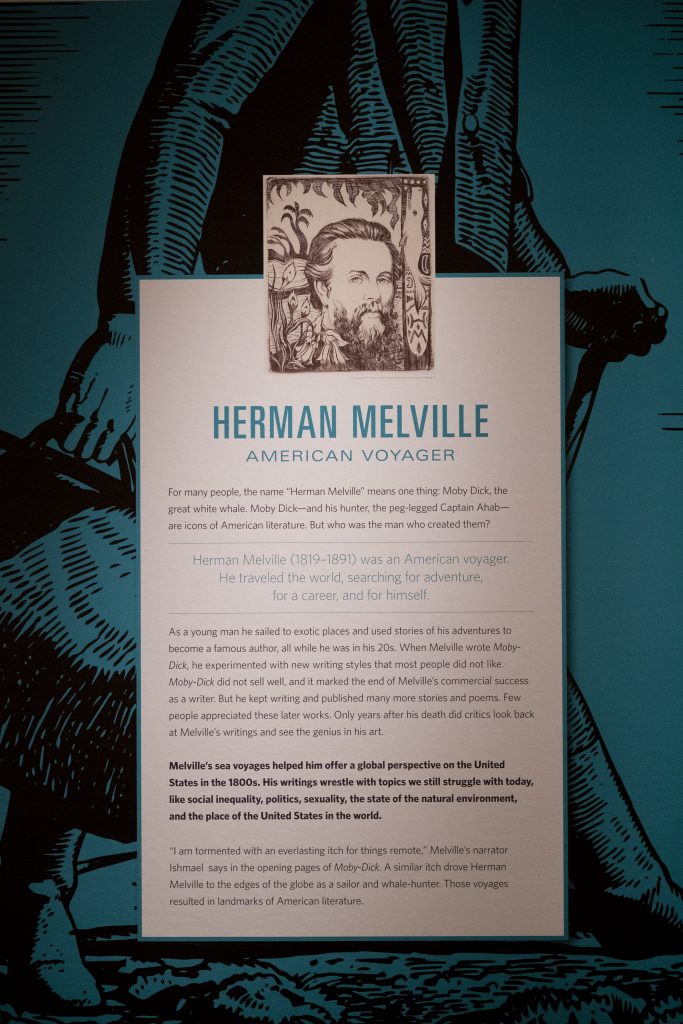
Just like a newspaper article or opinion piece, exhibitions often come with a point of view or an argument about a particular topic. Try to suss out what the exhibition team is attempting to teach in the gallery.
An important way to get quickly acquainted with the curators’ objectives very early in your visit is to read the introductory panel. Christine Miller, Director of Communications and Marketing at the Free Library of Philadelphia (whose department collaborates closely in The Rosenbach’s exhibition development process), has this to say about the introductory panel. “My favorite part of an exhibition is the first panel. Knowing that the curator chose their words wisely, I think the first panel is such a great way to dive right into the exhibition and get a sense of what you’re in for. I rarely read everything in an exhibition, but I always read the first panel.”
Rosenbach Curator Judith M. Guston offers a similar take. “You may want to read the introductory panel, which will explain the curators’ main goals and themes. With this knowledge in hand, you should find that all of the objects and text in the exhibition support those ideas, so feel free to pick and choose what you want to look at and learn about.”
Both Christine and Judy make an important point: it’s unlikely you’ll engage with every single object and piece of text in an exhibition, so you have to be strategic about what you read and what you study. A little bit of forethought can go a long way in helping you structure your gallery visit.
The introductory panel for American Voyager is a case in point, regarding how the first text you encounter can equip you with the information you need to appreciate the rest of the exhibition. The panel, pictured above, states upfront what the main idea behind the exhibition is: “Herman Melville (1819-1891) was an American Voyager. He traveled the world, searching for adventure, for a career, and for himself.” This single sentence lays the foundation for the idea underpinning the rest of the show: Melville’s voyages informed his work on every level. The panel also identifies by name five critical themes explored in the exhibition: social inequality, politics, sexuality, the natural environment, and global affairs. Each of the subsequent interpretive wall panels offers further information and context about the themes laid out in the introductory panel. You can see a few examples below.
Top Tip #6: Pay close attention to information about the objects…especially the “tombstones.”
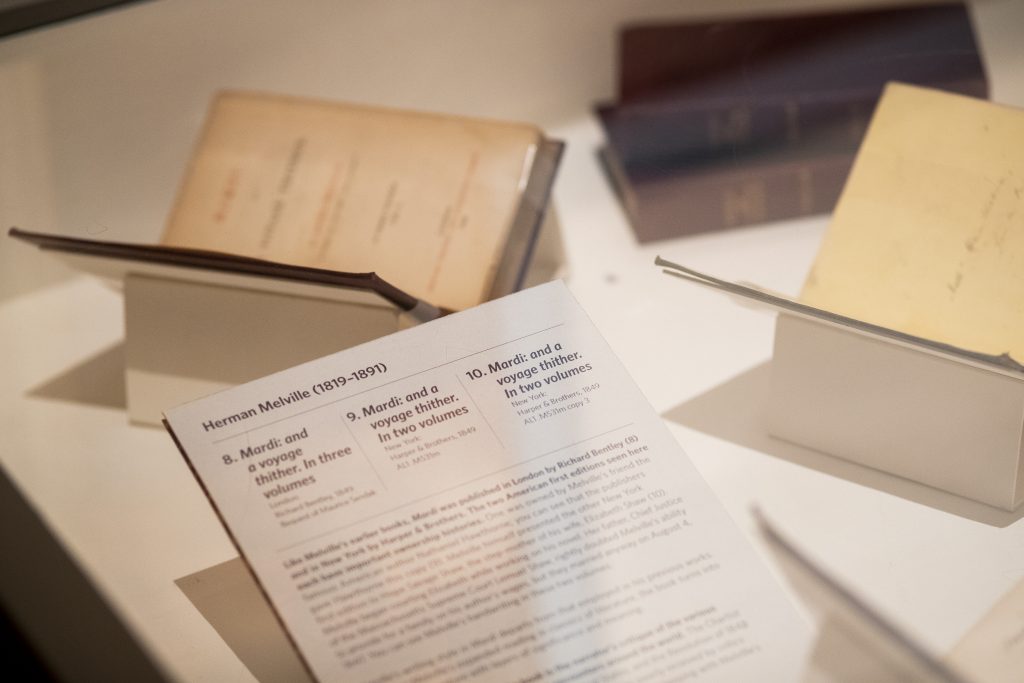
Rosenbach exhibitions are full of tombstones. No, I don’t mean the kind you find in a graveyard; rather, I am referring to the small captions you generally find at the top of each object label that give you key details about the artifact in question. These little tombstones are chock full of useful information about the artifacts they describe: the name of the pieces, when they were made, and who owns the pieces (The institution? A private lender? And so on.). Tombstones offer the nuts-and-bolts information about collection objects on display. You’ll get a much better sense of the objects—and thus the organizing principles of the exhibition—if you engage deeply with the tombstones.
Top Tip #5: Take flash-free photographs! And not just of the objects.
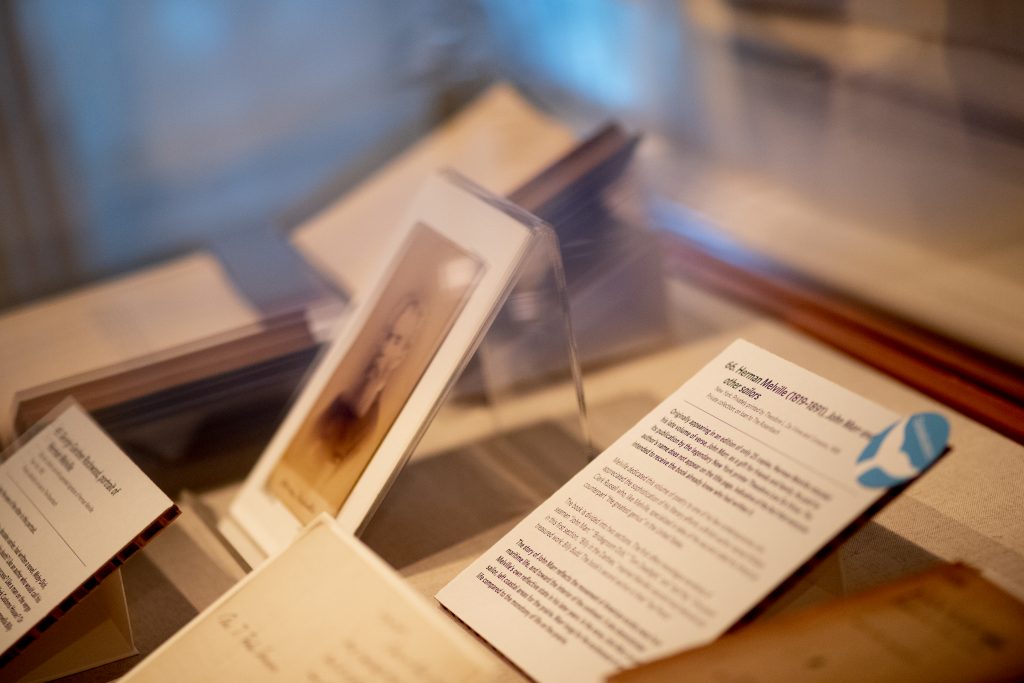
Assuming the museum you are visiting does not have a policy against photography, why not document your favorite objects in the exhibition for future reference? Says Rosa Doherty, The Rosenbach’s Manager of Communications: “Personally, my visiting style is to bounce around to what catches my eye and then to slowly work the things I’m interested in. If I really like something specific I will always take a photo of the object and the label. You think you’ll remember the details but… I never do! It’s nice to be able to go back and look.”
Be sure to take photos of objects and artworks in which you are interested, and as Rosa advises, try to photograph the tombstone information associated with the piece: title, date made, materials, and, very importantly, the object’s accession or catalogue number. That way, if you ever want to learn more about the object, you have all the information you need to contact the museum with questions and do more research later.
Also, many museums nowadays are happy to see you post your pics to social media. In fact, they may invite you to tag their institution’s social media account and use a hashtag associated with the exhibition. For example, outside of American Voyager, The Rosenbach invites visitors to tag photos to @TheRosenbach and include the hashtags #AmericanVoyager #MelvilleAt200 in their posts. “We love it when you take & share pictures of our collections,” says Rosenbach Registrar Jobi Zink. “But please do not use a flash!”
Rosenbach Curator Judith M. Guston offers similar perspective. “Once you have found those special objects, ideas, and stories, don’t forget—if the museum allows photography—you may want to take a snapshot as a memento or to post it, or send to friends. Most museums like to be tagged and reviewed. And we love for you to recommend our exhibitions to others.”
Do you desire an even more in-depth and contemplative gallery experience? Then follow the advice of Free Library Head Writer Clare Fentress. “Going through an exhibition with pencil and notebook in hand helps me respond more fully to what I’m seeing and better retain information. I’ll draw things of particular interest, develop my own ideas, and write down questions that come up—the questions I circle, so that I can easily go back into my notebook later and look up words or concepts I didn’t understand. It keeps me thinking about the exhibition well after I’ve left it.”
Top Tip #4: Be sure to read any print literature distributed as part of the exhibition.
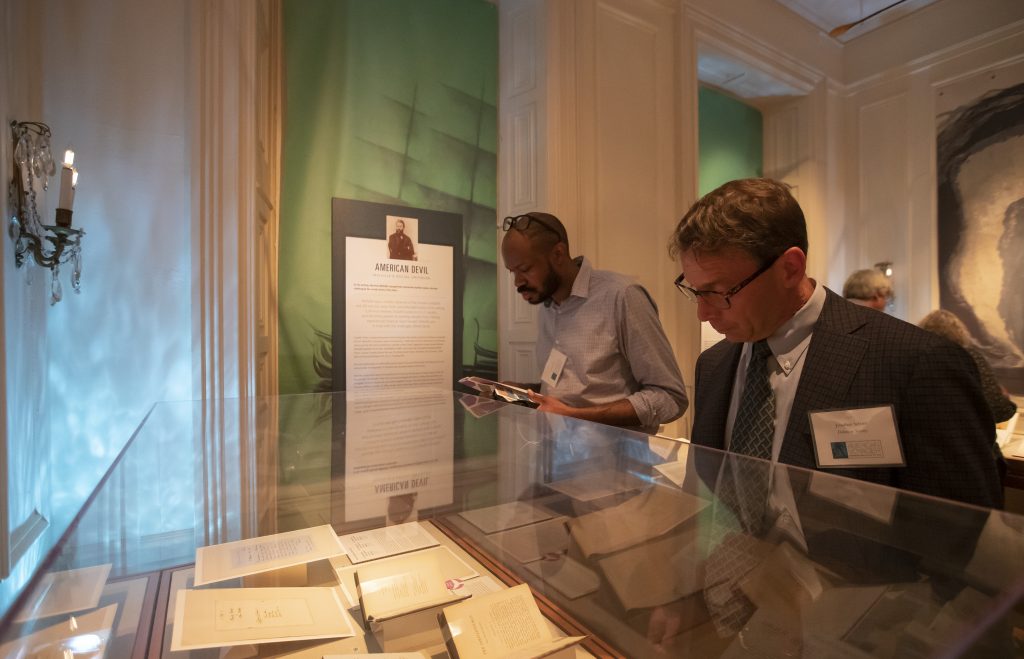
Museums often create print literature (and, increasingly, digital media) to deepen your exhibition experience. Why? Because curators and educators know that the public will not be able to read every single bit of text in the galleries, and visitors may wish to continue engaging with content upon leaving the museum. If you see free literature being distributed as part of an exhibition, be sure to pick it up, engage with it, and take it with you as a memento of your visit.
An example of this technique—and why it’s important for visitors to engage with exhibition print media—is The Rosenbach’s Chart Your Own Voyage gallery guides, which are distributed outside the American Voyager galleries. These gallery guides have an interesting origin story. As The Rosenbach’s exhibition team developed the concept for American Voyager, we knew we wanted the exhibition to tell a broad story about Herman Melville’s life and work but also delve into critical issues of our own time through the lens of Melville’s writings. So, we ended up creating gallery guides organized around four conceptual themes to help visitors approach Melville through innovative analytical lenses: Globalization, Social Justice, Marine Conservation, and Queer Melville. The brochures guide visitors to carefully-selected objects in the galleries that relate to the themes, and our guests are free to take the guides with them when they leave. These guides add a different element to the exhibition experience, so we strongly encourage our visitors to take them.
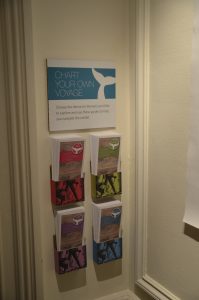
Top Tip #3: Take a guided tour of the exhibition, if possible, or attend a related program.

It’s common practice at museums nowadays to develop a portfolio of programs and events around major exhibitions. Attending a program designed to complement an exhibition will help you deepen your learning experience, connect you with like-minded museum visitors, and provide pathways to deepen your involvement at the institution. For example, in fall 2020, The Rosenbach partnered with the Independence Seaport Museum to host a Moby-Dick Marathon Reading, which allowed for a deep dive into Melville’s classic novel. The event beautifully complemented the work done in The Rosenbach’s American Voyager exhibition and there’s more on the way. Click here for upcoming programs related to American Voyager. When you visit a museum exhibition that intrigues you, be sure to inquire as to what upcoming programs might relate to it. Many museums offer guided tours of exhibitions on a regular schedule, so be sure to check into the many ways you can explore the galleries.
Top Tip #2: Take. Your. Time.
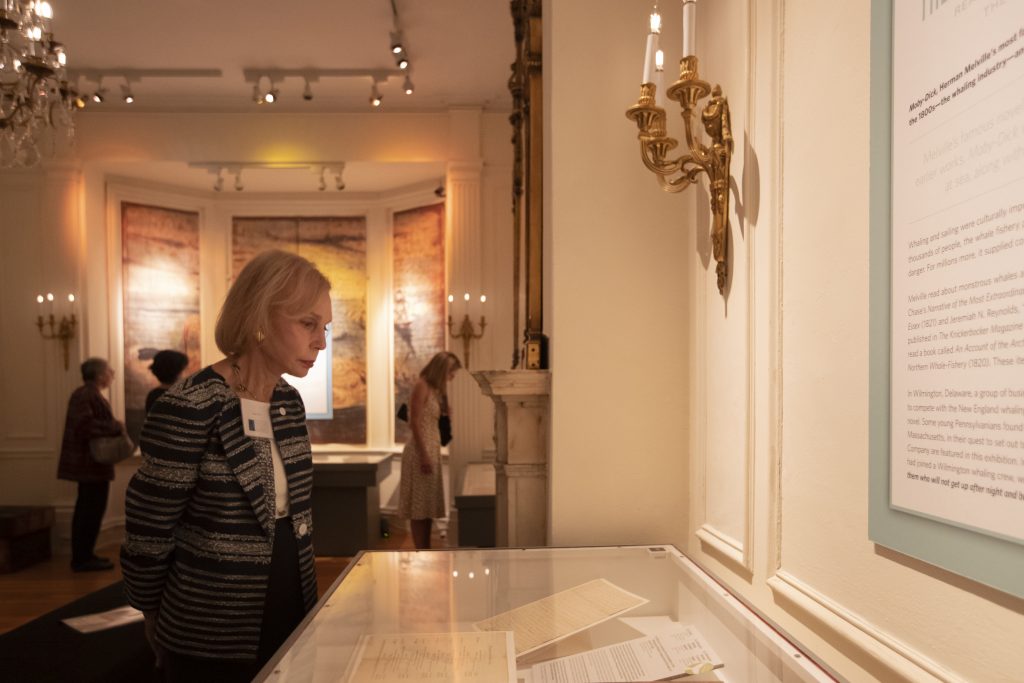
Our world can be so fast-based, stressed out, and chaotic. A museum visit, on the other hand, should provide you with a place of refuge to explore your intellectual and cultural interests. Take your museum visit as an invitation to slow down, relax, and commune with the collections and ideas you encounter in the galleries.
Rosenbach Visitor Services Assistant Kristina Robold advises: “Plan enough time for your visit. You don’t need to dedicate a whole day to a museum visit, but you usually need at least an hour or two.” What’s more, according to Robold, “Stay fed and hydrated to fight off museum fatigue.” She emphasizes that it’s okay to take rests during your visit. “Museums have scattered seating in their galleries for a reason. Take a break if you need it.” Andrew White echoes this sentiment. “After I’ve looked at the whole exhibit I love taking a break in the museum cafe or lobby and letting my brain exhale. After an interlude, I can return to see my favorite objects, savor them, and fix them in my memory.”
If you can, and if you have sufficient interest, why not make a return visit to the same exhibition? That way, you can learn and see even more. It’s best to think of your trip to an exhibition as the beginning of your intellectual journey, not the entirety of your experience. Use the exhibition as a springboard to learn more, both at the museum and when you head home.
Top Tip #1: If you have questions or comments, or want more information, contact the museum to share! Also, complete any evaluations given to you.
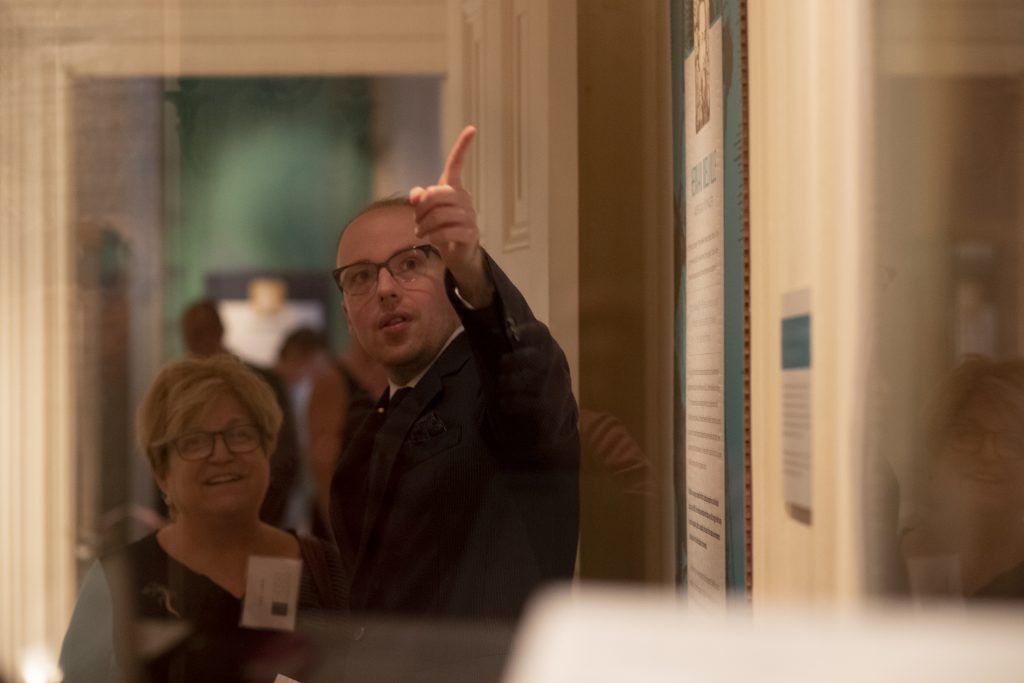
Museums love to hear from visitors about their experiences, and especially how you interacted with collection objects. If you have questions, comments, ideas, or just want to share your thoughts, do not hesitate to ask how to get in touch with the team that put the exhibition together. They will probably appreciate knowing that the exhibition was impactful for you. “Ask questions!” says Registrar Jobi Zink. “Even if the guide doesn’t know the answer, they can put you in touch with someone who does.”
Also, museums often employ tools like feedback surveys and questionnaires to help their staff get a sense of how successful their project was. Please take the time to complete these forms; they are very helpful to staff in deciding how to enhance the visitor experience. At The Rosenbach, we recently unveiled a new visitor survey, so when you visit us, you’ll have the opportunity to communicate directly with us about your experience.
Connecting with museum staff can help you learn about other collection items that you may find interesting. “Ask about your favorite author or historical figure” when you visit The Rosenbach, says Jobi Zink. “We may just have something by or about them in our collection.”
In conclusion, exhibitions are one of the best ways to get to know an institution, experience a bit of its collection, and immerse yourself in its organizational mission and culture. Try out these tips the next time you visit an exhibition, and let us know how they work for you!
Do you have your own tips for visiting museum exhibitions that you’d like to share? If so, please leave them in the comments section below, or share them via social media and tag @TheRosenbach #AmericanVoyager #MelvilleAt200 #ExhibitionTips. We hope to see you at The Rosenbach very soon.

